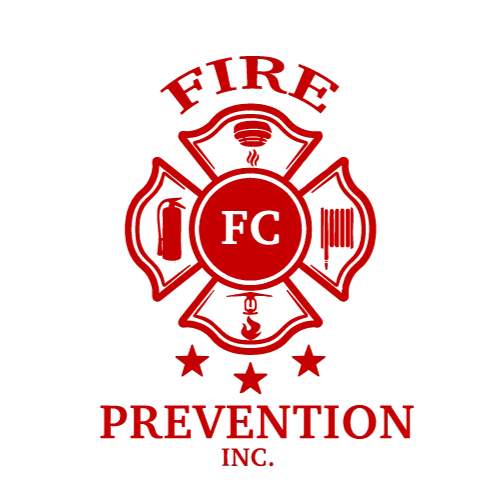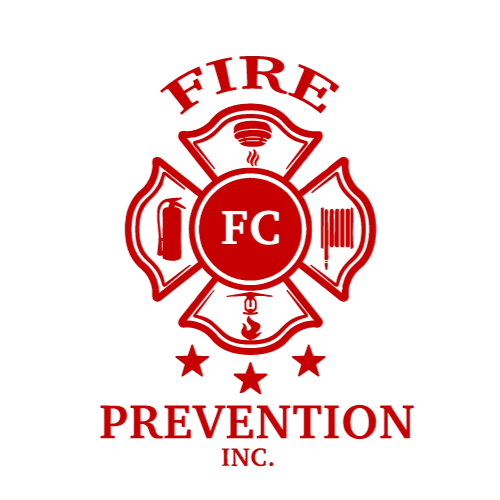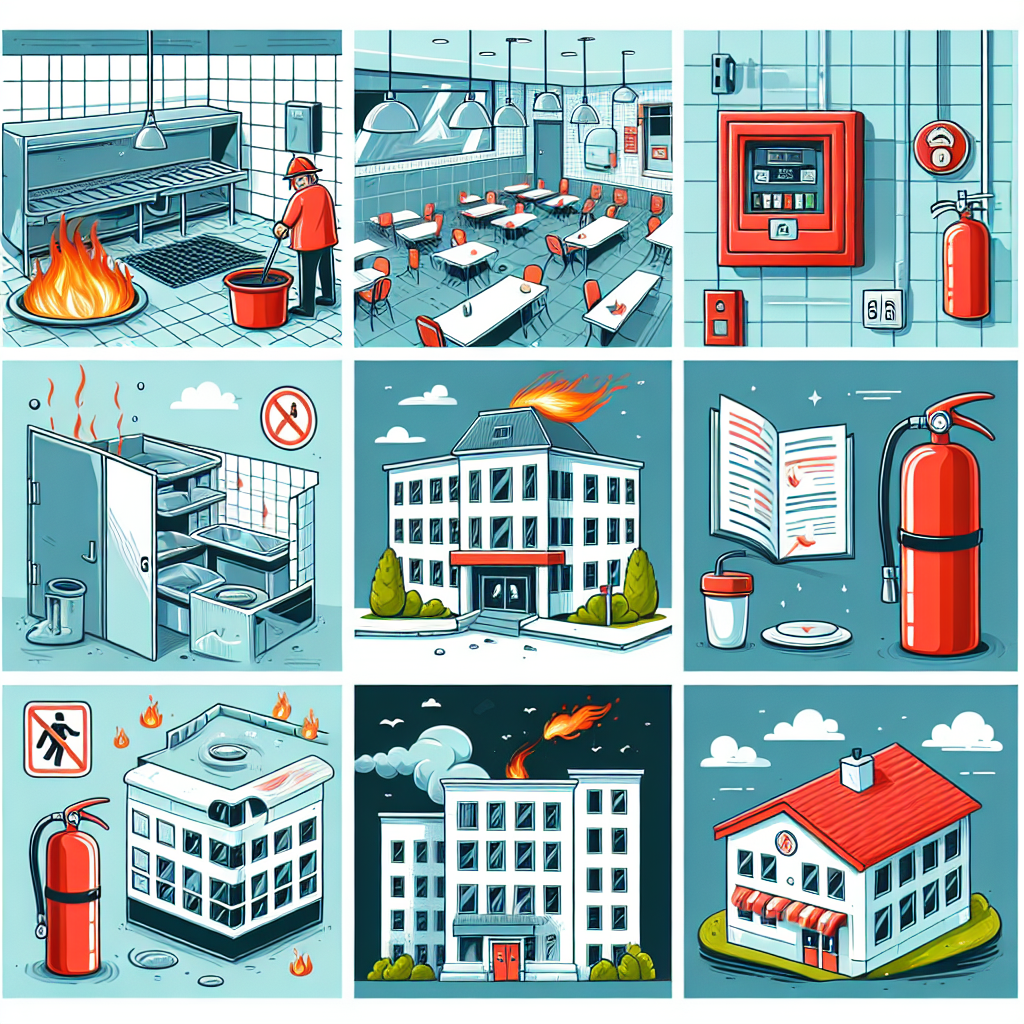Fire safety is a critical concern for everyone. Regular fire inspections play a vital role in maintaining safety and ensuring compliance with fire codes.
However, many property owners and managers often overlook common fire code violations. These oversights can lead to severe consequences, including fines, penalties, and even catastrophic fires.
This article aims to shed light on these common fire code violations. It will provide guidance on how to avoid them and emphasize the importance of regular fire inspections.
By understanding and addressing these violations, you can ensure a safer environment for all occupants and avoid potential legal and financial repercussions.
The Importance of Regular Fire Inspections
Regular fire inspections are essential for identifying potential hazards. They ensure that safety protocols are followed, reducing the risk of fire-related incidents.
By conducting regular inspections, property owners can stay compliant with local fire codes. This compliance helps avoid costly penalties and ensures a safer environment for all.
Inspections also help in maintaining fire equipment. Proper maintenance ensures that these safety tools function when needed most.
Furthermore, regular inspections provide peace of mind. Knowing that your property is secure and up to code offers reassurance to property owners and occupants alike.
What Fire Inspections Entail
Fire inspections assess various safety elements in a building. Inspectors examine and ensure compliance with fire codes to prevent potential hazards.
These inspections often involve thorough checks of fire alarms, extinguishers, and exits. Regular assessments maintain functionality and reliability.
Below is a list of common areas inspected:
- Fire alarms and detection systems
- Fire extinguishers and suppression systems
- Emergency lighting and signage
- Fire exits and escape routes
Inspections also cover storage practices and electrical safety. Proper assessment can prevent fires from starting or spreading.
Identifying Common Fire Code Violations
Fire code violations can pose serious safety risks. Identifying these common violations is crucial for maintaining safety. Many violations stem from oversight or neglect.
Blocked or unmarked fire exits remain among the most frequent issues. Clear pathways are vital for swift evacuations.
Inadequate fire alarm systems can delay response times. Reliable alarms are essential for early fire detection.
Improper storage of flammable materials contributes to increased fire risk. Safe storage minimizes potential ignition sources.
Fire safety equipment needs regular maintenance. Neglected upkeep could render equipment ineffective during emergencies.
Here is a list of common fire code violations:
- Blocked fire exits
- Inadequate fire alarms
- Improper storage of hazardous materials
- Unmaintained safety equipment
Addressing these issues early prevents escalation. Regular inspections help spot violations timely. Understanding the risks fosters safer environments.
Blocked or Unmarked Fire Exits
Blocked fire exits impede safe evacuations. Every second is crucial during emergencies. Yet, this issue is widely overlooked.
Proper signage is essential for exit identification. Clear marking helps guide people. Regular checks ensure exits remain unobstructed.
Ensuring accessible exits requires diligence. The safety benefits far outweigh any inconvenience. Keep pathways free and well-marked.
Inadequate Fire Alarm Systems
An effective fire alarm system is vital for safety. Malfunctioning alarms delay alerts. Early detection is crucial in emergencies.
Regular testing ensures system functionality. Timely maintenance prevents failures. Upgrades may be necessary to meet current standards.
Systems should cover all building areas. Comprehensive coverage maximizes protection. Ensuring readiness can save lives.
Improper Storage of Flammable Materials
Flammable materials increase fire risk. Improper storage can lead to catastrophic events. It’s essential to handle them cautiously.
Keeping combustibles in designated areas mitigates risks. Store these materials in suitable containers. Compliance ensures safer environments.
Organizations should regularly review storage practices. Training staff in proper methods is crucial. Safe storage reduces potential hazards.
Neglected Maintenance of Fire Safety Equipment
Well-maintained equipment is pivotal for fire safety. Neglected maintenance compromises effectiveness. Regular checks are non-negotiable.
Fire extinguishers, sprinklers, and alarms need inspection. Following manufacturer guidelines is key. Periodic reviews ensure reliability.
Failing to maintain equipment endangers lives. Proactive care is an investment in safety. Don’t let neglect lead to disaster.
How to Avoid Fire Code Violations
Avoiding fire code violations requires proactive measures. Regular assessments and updates are key. Address potential hazards promptly to reduce risks.
Developing a fire evacuation plan is crucial. Ensure it’s well-structured and practiced. A clear plan saves time in emergencies.
Maintenance of fire protection systems is mandatory. Regular testing identifies faults early. Keeping systems updated ensures readiness.
Employee training enhances fire safety awareness. Informed staff react efficiently. Proper training prepares them for emergencies.
Consider the following tips to avoid violations:
- Conduct regular fire safety inspections
- Implement a comprehensive evacuation plan
- Test fire alarms and equipment routinely
- Store combustible materials safely
- Train employees on fire procedures
By following these practices, facilities can maintain compliance. Safety should always be a priority. Prevention is better than facing costly penalties later.
Developing and Implementing a Fire Evacuation Plan
A fire evacuation plan is a blueprint for safety. It outlines exit routes and assembly points. Every facility should have a tailored plan.
Practice drills reinforce the evacuation strategy. Regular drills ensure familiarity. This leads to confident, timely responses in real events.
Update the plan as needed. Change occurs, requiring adjustments. An up-to-date plan reflects current conditions.
Regular Testing and Maintenance of Fire Protection Systems
Testing fire protection systems is essential. Faulty systems fail when needed most. Regular tests catch issues early.
Maintenance ensures optimal performance. Conduct inspections following a set schedule. This keeps systems in top condition.
Plan for periodic upgrades. Technologies evolve and older systems may not suffice. Staying current means staying safe.
Training Employees on Fire Safety Procedures
Training prepares employees for emergencies. Clear procedures lead to effective action. Regular sessions reinforce key concepts.
Employees need to know alarm sounds and exit routes. Understanding their roles improves coordination. Role-specific training can increase efficiency.
Simulations make training more effective. Practicing in a controlled environment boosts confidence. Well-trained staff enhance overall safety.
The Role of Fire Inspection Services
Fire inspection services play a vital role in safety. They ensure compliance with fire codes by conducting thorough inspections. Their expertise helps identify potential hazards that may be overlooked.
These services provide valuable insights into fire safety measures. They assess fire alarms, exits, and emergency plans. Their evaluations help in rectifying any issues promptly.
By using fire inspection services, property owners gain peace of mind. They offer an unbiased perspective on safety standards. This ensures that fire safety measures are up to date and effective.
Regular use of inspection services can prevent costly violations. They help mitigate risks before they escalate. Engaging professionals is a smart investment in protection.
Preparing for a Fire Safety Inspection
Preparation is key to a successful fire safety inspection. Start by understanding the specific codes relevant to your building. Knowing these can prevent surprises during the inspection.
A checklist can be invaluable. It ensures all areas of concern are addressed and helps in organization. Consider including items like:
- Testing all fire alarms
- Checking that fire exits are clear
- Ensuring all fire extinguishers are accessible
Communication with your team is crucial. Make sure everyone is informed about the inspection. This fosters collaboration and ensures nothing is overlooked.
Addressing potential violations in advance can save time and money. By proactively managing issues, you demonstrate a commitment to safety. This not only ensures compliance but also boosts overall safety.
Addressing Violations and Enhancing Fire Safety
When violations are found, swift action is crucial. Prioritize the most critical issues first, focusing on those that pose an immediate risk. This approach ensures urgent matters are handled promptly.
Consult with fire safety professionals for effective solutions. Their expertise can guide you in correcting violations and improving safety measures. They provide insights that might be overlooked internally.
Involve your team in rectifying the issues. Encourage employees to participate in safety audits and report concerns. Their engagement fosters a more inclusive safety culture.
Continuous improvement should be your goal. Regularly update your fire safety plans and equipment. Staying informed about the latest fire safety standards helps maintain compliance and enhance overall protection.
Conclusion: Fostering a Culture of Fire Safety
Promoting fire safety is a continuous commitment. It requires the active participation of everyone involved in maintaining safety standards.
Encourage open dialogue about fire risks and prevention. With concerted effort, we can foster an environment where safety is a priority, ensuring the wellbeing of all occupants.



Comments are closed